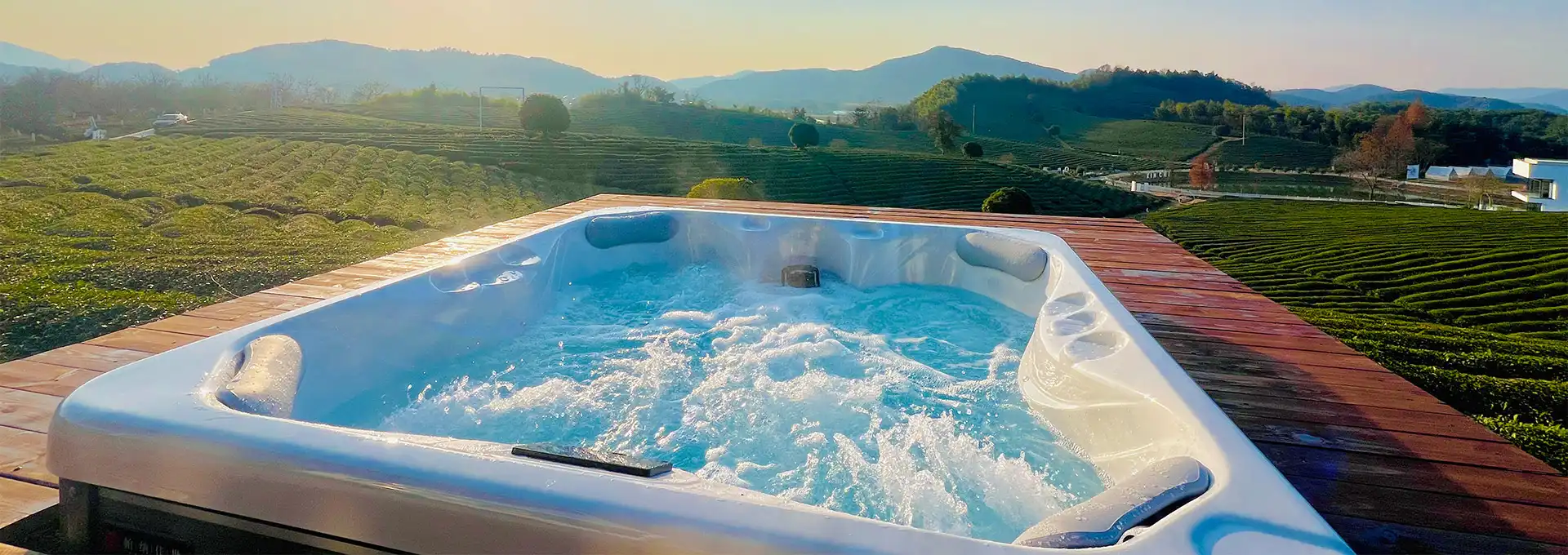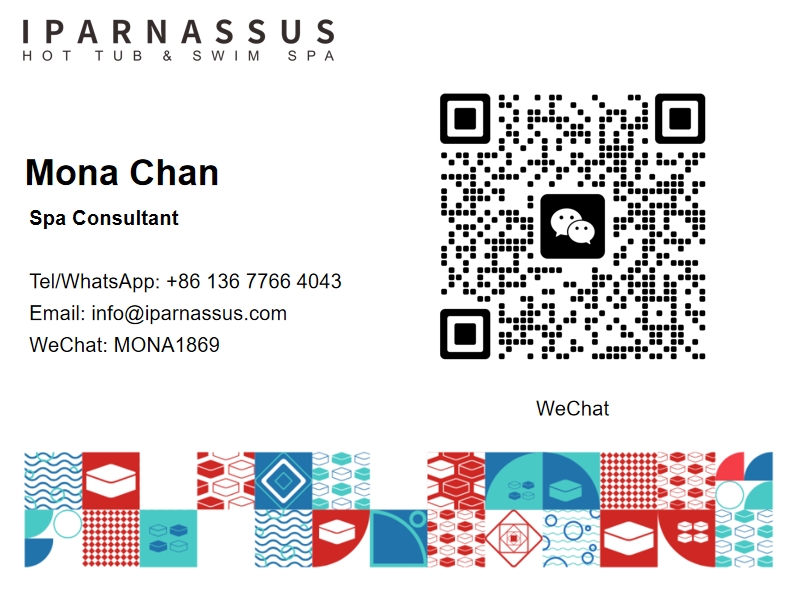Are Hot Tub Chemicals Harmful?
2024-10-24 15:31:59
Hot tubs are a popular way to relax and unwind, but many people have concerns about the chemicals used to keep them clean and safe. This article will explore the potential risks associated with hot tub chemicals and provide information on how to use them safely. We'll also discuss alternatives and best practices for maintaining a healthy hot tub environment.
How Often Should You Change the Water in an Outdoor Hot Tub?
Maintaining proper water quality is crucial for the safety and enjoyment of your outdoor hot tub. The frequency of water changes depends on several factors, including usage, water quality, and maintenance practices. Generally, experts recommend changing the water in an outdoor hot tub every 3 to 4 months. However, this can vary based on how often you use the tub and how well you maintain it.
Regular water testing is essential to determine when a change is necessary. If you notice cloudy water, unusual odors, or difficulty maintaining proper chemical balance, it may be time for a water change. Some high-quality hot tubs, like those produced by Shenzhen Iparnassus Intelligent Spas Co., LTD, are equipped with advanced filtration and sanitization systems that can extend the time between water changes.
To maximize the time between water changes:
1. Shower before entering the hot tub to reduce the introduction of contaminants.
2. Maintain proper chemical balance through regular testing and adjustment.
3. Clean filters regularly according to the manufacturer's instructions.
4. Use a cover when the hot tub is not in use to prevent debris from entering the water.
By following these practices, you can maintain water quality for longer periods, reducing the frequency of water changes and the overall use of chemicals.
What Chemicals Are Needed for an Outdoor Hot Tub?
Proper chemical maintenance is essential for keeping your outdoor hot tub safe and enjoyable. The primary chemicals needed for an outdoor hot tub include:
1. Sanitizers: The most common sanitizers are chlorine and bromine. These chemicals kill bacteria and other microorganisms that can thrive in warm water.
2. pH Adjusters: Maintaining the proper pH level (ideally between 7.2 and 7.8) is crucial for sanitizer effectiveness and user comfort. pH increasers and decreasers are used to adjust the water's acidity or alkalinity.
3. Alkalinity Increasers: Total alkalinity acts as a buffer for pH levels. Maintaining proper alkalinity (typically between 80-120 ppm) helps stabilize pH and prevents rapid fluctuations.
4. Calcium Hardness Increasers: Proper calcium hardness levels (usually between 150-250 ppm) prevent water from becoming too soft, which can damage hot tub components.
5. Shock Treatments: Periodically shocking the water with a high dose of oxidizer helps eliminate contaminants and restore water clarity.
6. Enzymes and Clarifiers: These additives help break down organic contaminants and improve water clarity.
While these chemicals are necessary for maintaining a safe and clean hot tub environment, it's important to use them correctly and in the proper amounts. Overuse of chemicals can lead to skin irritation, respiratory issues, and damage to the hot tub itself.
Shenzhen Iparnassus Intelligent Spas Co., LTD's hot tubs are designed with advanced filtration and sanitation systems that can help reduce the overall chemical usage. Their circulation and disinfection systems work efficiently to maintain water quality, potentially decreasing the frequency of chemical additions and water changes.
Can You Use an Outdoor Hot Tub Without Chemicals?
While it's possible to use an outdoor hot tub without traditional chemicals, it's not recommended due to the risk of bacterial growth and waterborne illnesses. However, there are alternative methods and systems that can reduce reliance on harsh chemicals:
1. Salt Water Systems: These systems use salt to generate chlorine through electrolysis, providing a gentler sanitizing experience with fewer added chemicals.
2. UV-C Light Systems: Ultraviolet light can effectively kill bacteria and other microorganisms, reducing the need for chemical sanitizers.
3. Ozone Systems: Ozone is a powerful oxidizer that can significantly reduce the amount of traditional chemicals needed.
4. Natural Enzymes: Some enzyme-based products can help break down organic contaminants and reduce the need for harsh chemicals.
5. Copper/Silver Ionization: This method uses metal ions to kill bacteria and algae, potentially reducing chemical usage.
While these alternatives can reduce chemical use, it's important to note that some level of chemical treatment is still typically necessary to maintain safe water quality. Regular testing and monitoring are crucial when using alternative systems.
Shenzhen Iparnassus Intelligent Spas Co., LTD incorporates advanced technology in their hot tubs, including efficient circulation and filtration systems. These features can help minimize chemical usage while maintaining water quality. Their hot tubs are designed with user health and comfort in mind, balancing the need for sanitation with the desire for a more natural bathing experience.
In conclusion, while hot tub chemicals can pose some risks if used improperly, they play a crucial role in maintaining a safe and enjoyable hot tub environment. By following proper maintenance procedures, using chemicals as directed, and considering alternative sanitation methods, you can minimize potential harm and maximize the benefits of your outdoor hot tub experience.
Shenzhen Iparnassus Intelligent Spas Co., LTD stands out in the market with their focus on vacation hot tubs and infinity pool spas. Their products are equipped with circulation filtration and disinfection systems that reduce the need for frequent water changes. With a professional team dedicated to design, R&D, production, sales, and after-sales service, the company has obtained over 30 patents as of 2023. The iParnassus® brand has a global presence, covering dozens of countries and regions.
For Middle Eastern hotel group purchasing, Shenzhen Iparnassus Intelligent Spas Co., LTD offers:
1. Free customized mold development
2. Free upgrade of electronic controls with hotel centralized management systems
3. Direct cooperation with top manufacturers, passing savings directly to hotels
4. North American production materials and standards at competitive prices
Their high-end, quality products and reliable after-sales service have led to sales in over 20 countries worldwide, making them a trusted choice for those seeking a balance between luxury and practicality in hot tub solutions.
For more information on hot tub installations and our products, please feel free to contact us at info@iparnassus.com.
References:
1. Centers for Disease Control and Prevention. (2022). Healthy Swimming.
2. Environmental Protection Agency. (2021). Healthy Hot Tubs.
3. Association of Pool & Spa Professionals. (2023). Hot Tub Maintenance Guide.
4. Journal of Environmental Health. (2021). Chemical Exposures in Swimming Pools and Hot Tubs.
5. American Chemistry Council. (2022). Pool and Spa Chemical Safety.
6. World Health Organization. (2020). Guidelines for Safe Recreational Water Environments.
7. National Swimming Pool Foundation. (2023). Hot Tub & Spa Handbook.
8. Journal of Water and Health. (2022). Microbial Contamination in Hot Tubs and Spas.
9. Aquatic Health & Safety Bulletin. (2023). Alternative Sanitation Methods for Hot Tubs.
10. International Journal of Environmental Research and Public Health. (2021). Health Effects of Exposure to Swimming Pool Chemicals.
Send Inquiry
Related Industry Knowledge
- What are the Essential Maintenance Checks for Hotel Hot Tubs in the Middle East?
- How Often Should I Replace My Hot Tub Filter?
- How Long Does It Take to Drain a Hot Tub?
- How to Clean My Swim Spa?
- Can You Put Chlorine in a Hot Tub?
- Are Hot Tubs Good for Osteoarthritis?
- What are you missing this summer besides wine and music!
- Can a Hot Tub Help with Muscle Recovery?
- How Can Outdoor Swim Spas Be Used for Muscle Recovery?
- Can a Hot Tub Help With a Cold?



